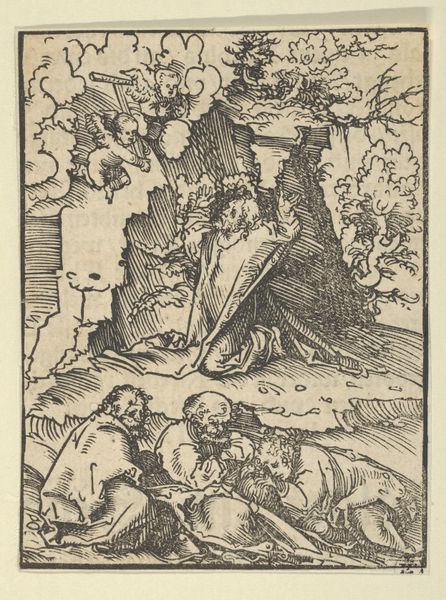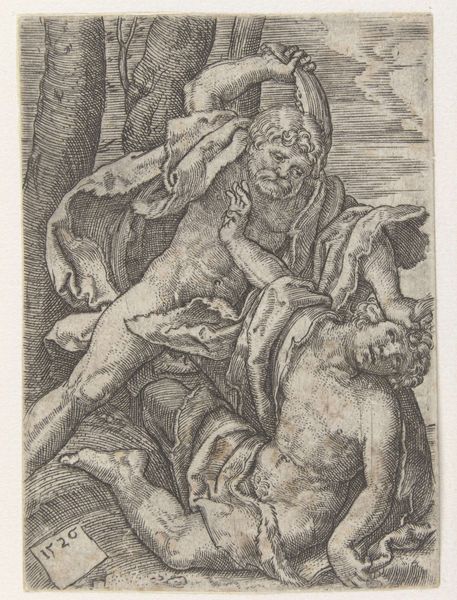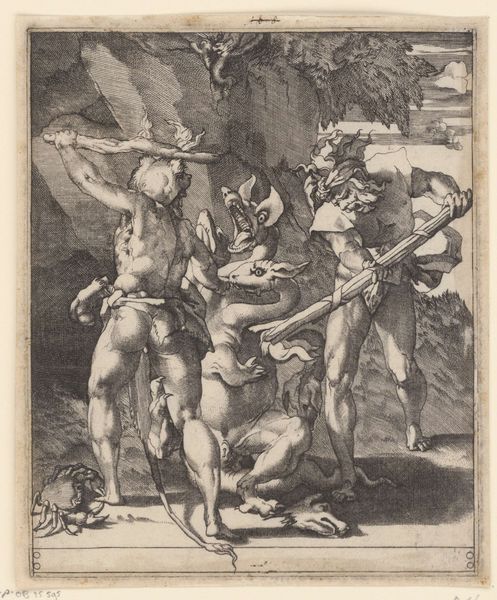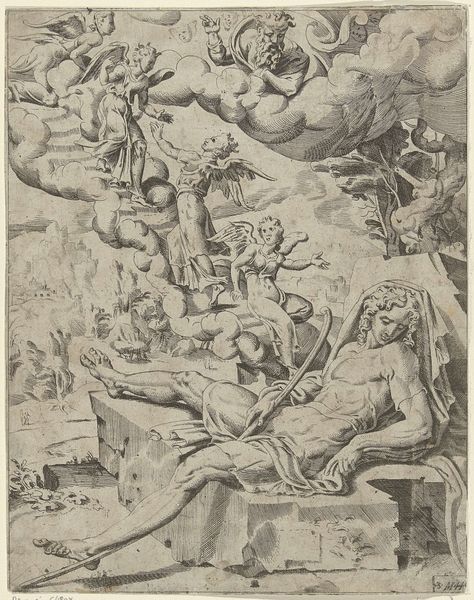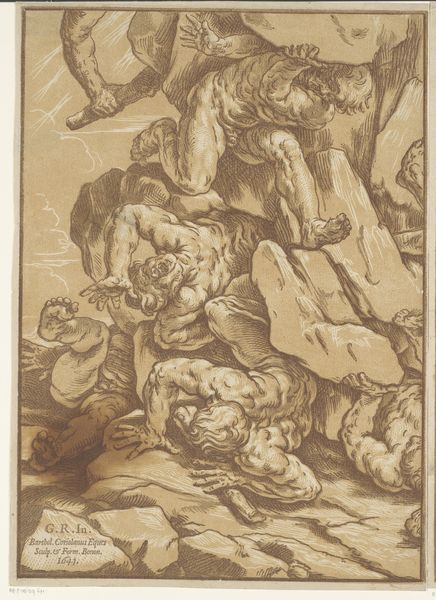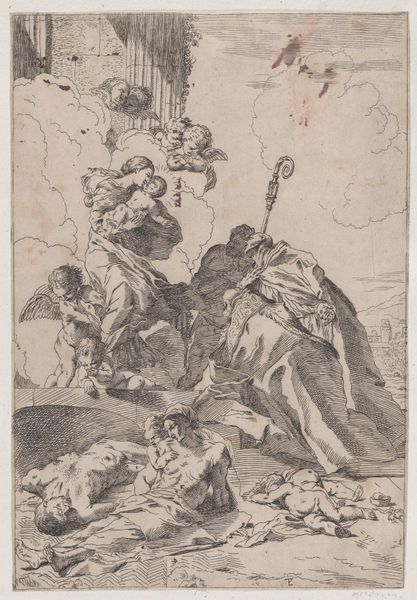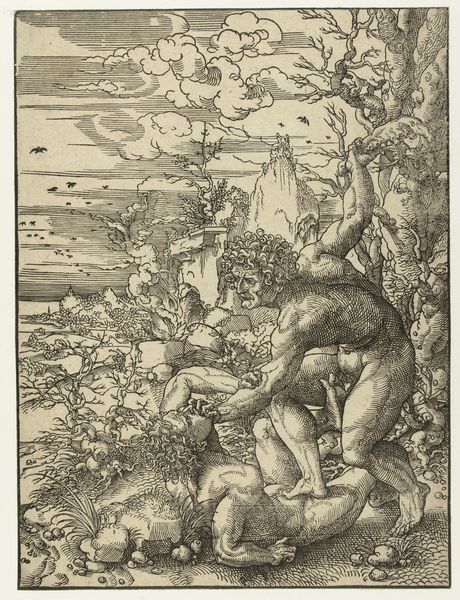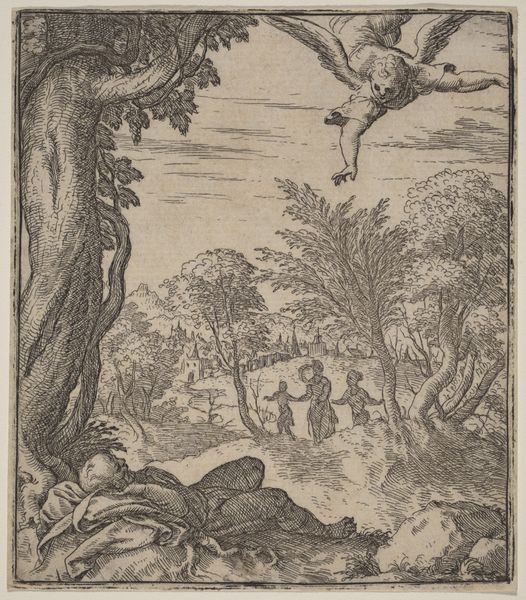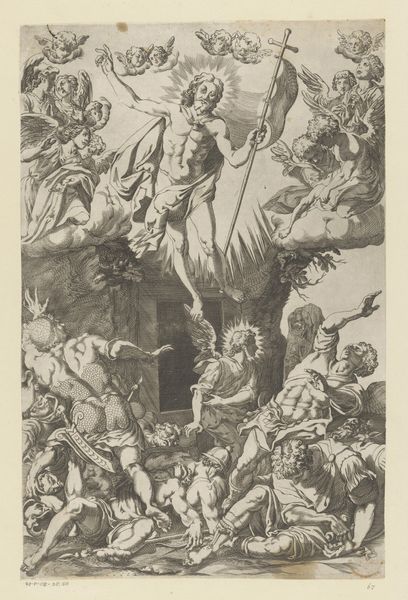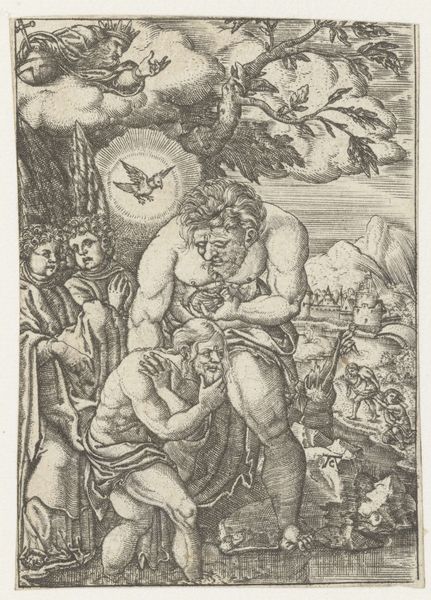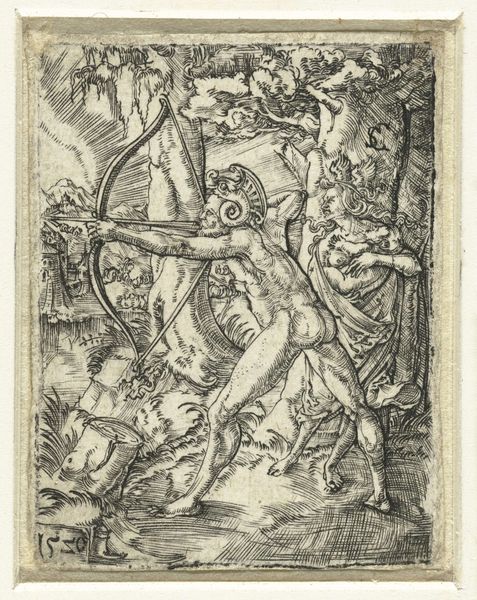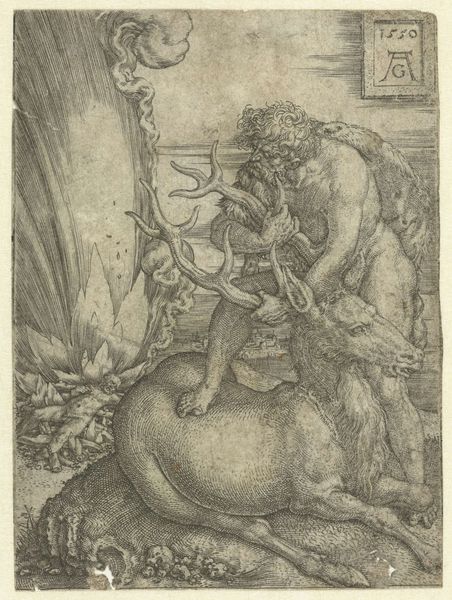
drawing, print, ink, pen, engraving
#
drawing
#
ink drawing
#
pen drawing
# print
#
figuration
#
11_renaissance
#
ink
#
pen
#
history-painting
#
northern-renaissance
#
engraving
Dimensions: height 238 mm, width 190 mm
Copyright: Rijks Museum: Open Domain
Curator: This engraving, executed around 1548 by Dirck Volckertsz Coornhert, is entitled *Afscheid van de aartsengel Rafaël*, or "The Departure of the Archangel Raphael." It depicts a scene from the Book of Tobit, rendered with striking detail. Editor: The figures, especially, they look monumental, even though this print must be relatively small. There’s a weightiness, an emotional gravity that immediately draws you in. Curator: Yes, Coornhert masterfully uses line work to convey depth and texture. Notice how the dense cross-hatching creates shadows that sculpt the forms of Tobit and his family as they witness the angel's ascension. Consider the symbolic resonance, here; angels frequently represent divine intervention, bridging the mortal and celestial realms. Their departures are bittersweet acknowledgments of humanity's limited capacity to contain divine grace. Editor: Absolutely. The cultural context here is so rich, isn't it? We're seeing this scene in the midst of the Northern Renaissance, when religious themes were increasingly interpreted through a humanist lens. How would this scene have resonated with a 16th-century audience grappling with shifting theological interpretations and social upheaval? The figures' expressions certainly telegraph this uncertainty. Curator: Indeed. Raphael's form, almost dissolving into light, emphasizes his transcendence and reflects ideas about immateriality that shaped Renaissance Christian thought. The architectural setting – that crumbling wall behind Tobias' mother – frames a narrative concerned with both the spiritual and the temporal, reflecting a society questioning rigid doctrines. It invites us to contemplate our own relationships with faith and authority. Editor: What strikes me, in light of today’s conversations, is how power is represented through imagery like this. It shows a community on its knees, subject to divine authority, but the artistry itself hints at emerging questions around religious and social control, right? Coornhert, with his skills as a draftsman and engraver, creates something visually arresting, sure, but its potency emerges from its nuanced portrayal of historical tensions. Curator: I agree; Coornhert's work isn't merely illustrative; it is deeply introspective. Its strength comes from depicting not just the biblical scene, but also the human drama inherent in faith and change. Editor: Yes, a piece that shows us how a historical moment and artistic rendering intertwine and still speak to us, centuries later, about faith and change.
Comments
No comments
Be the first to comment and join the conversation on the ultimate creative platform.
